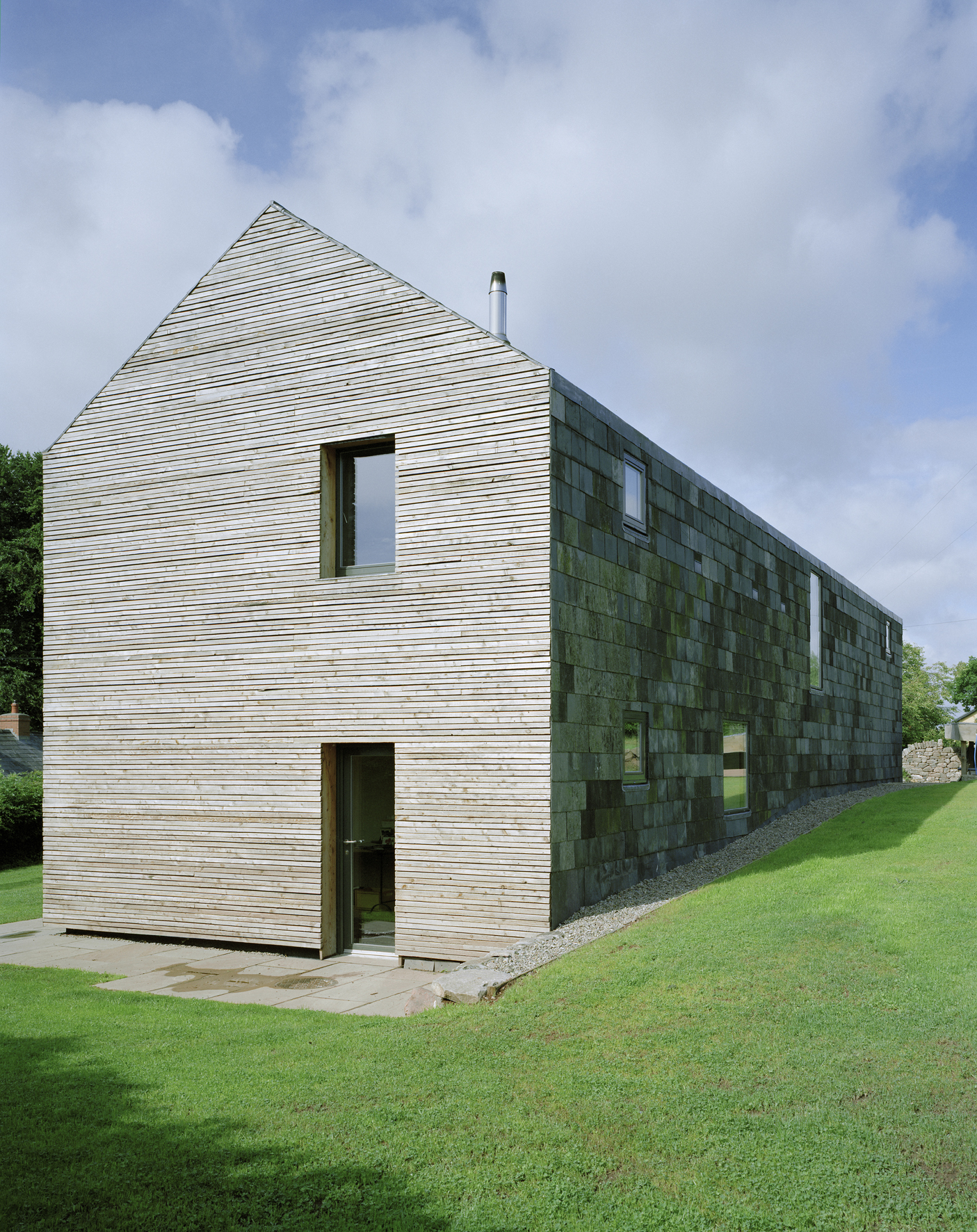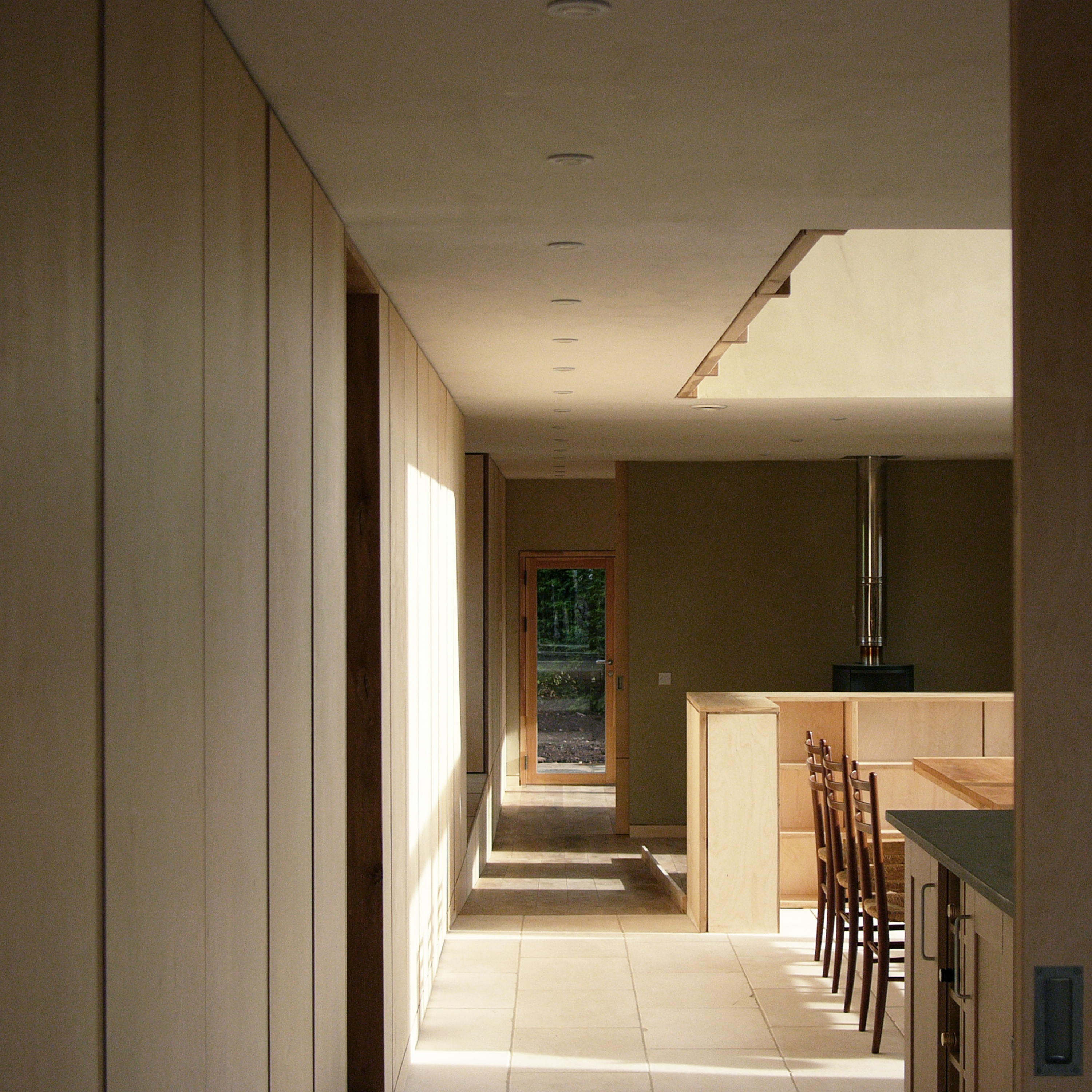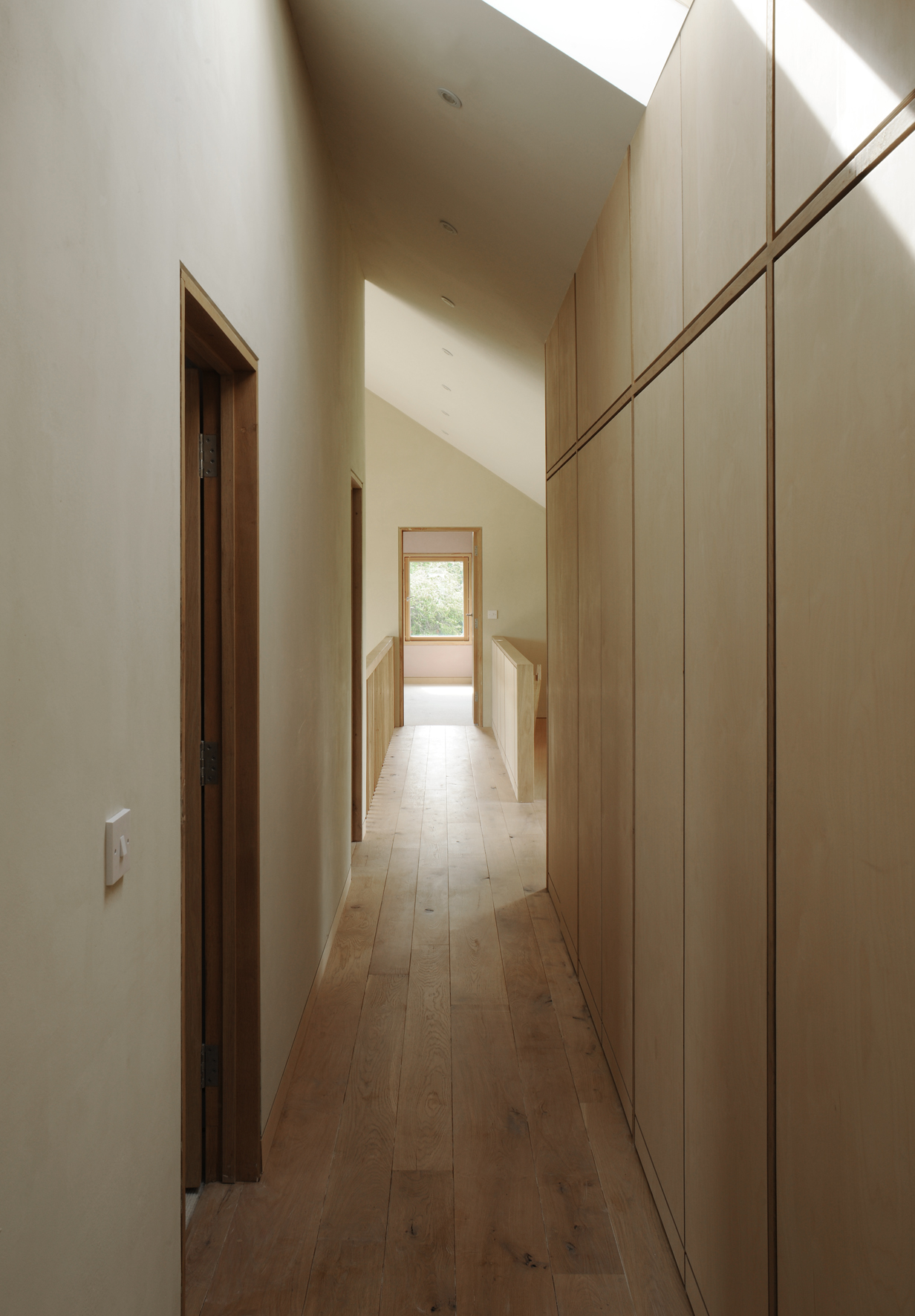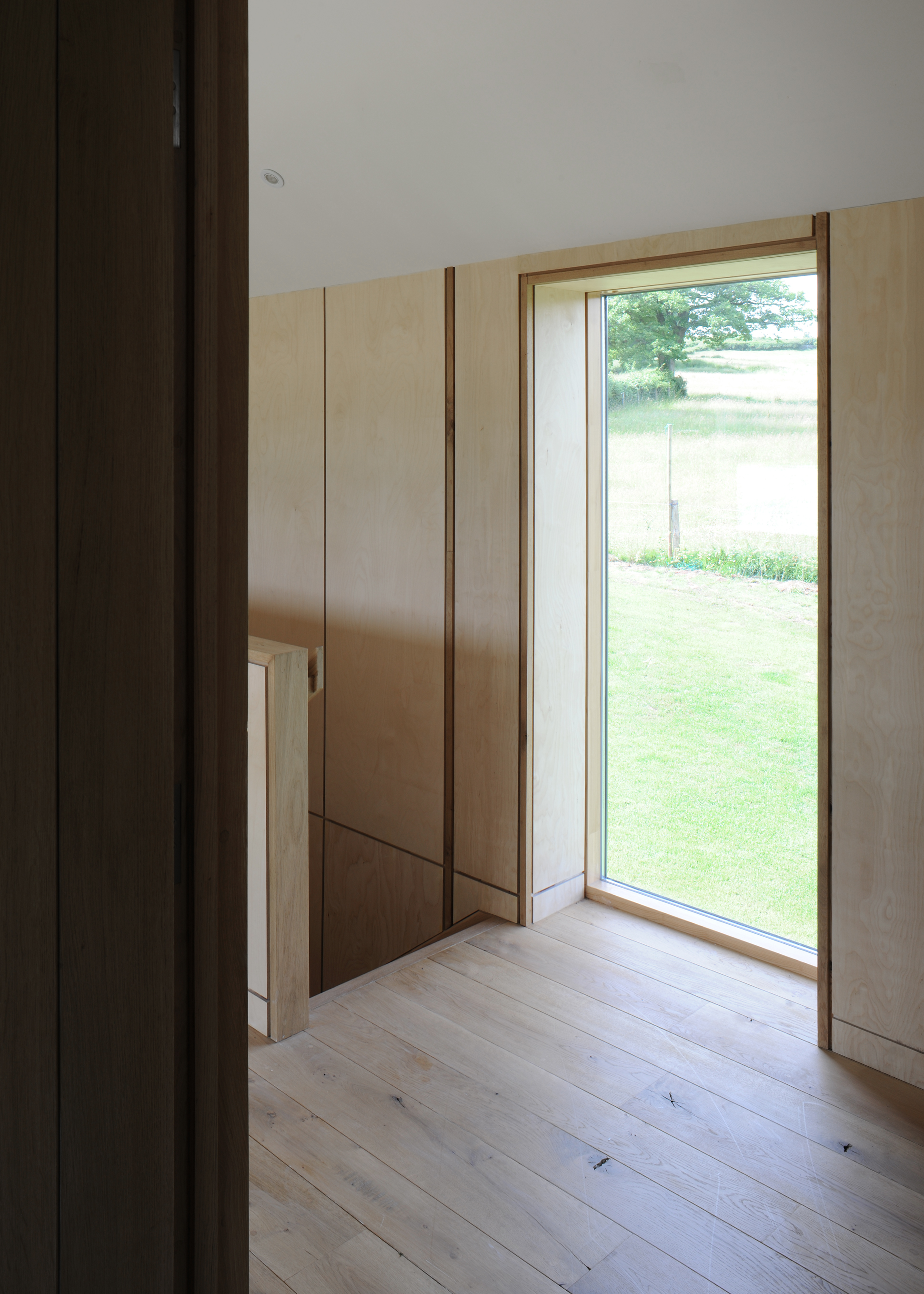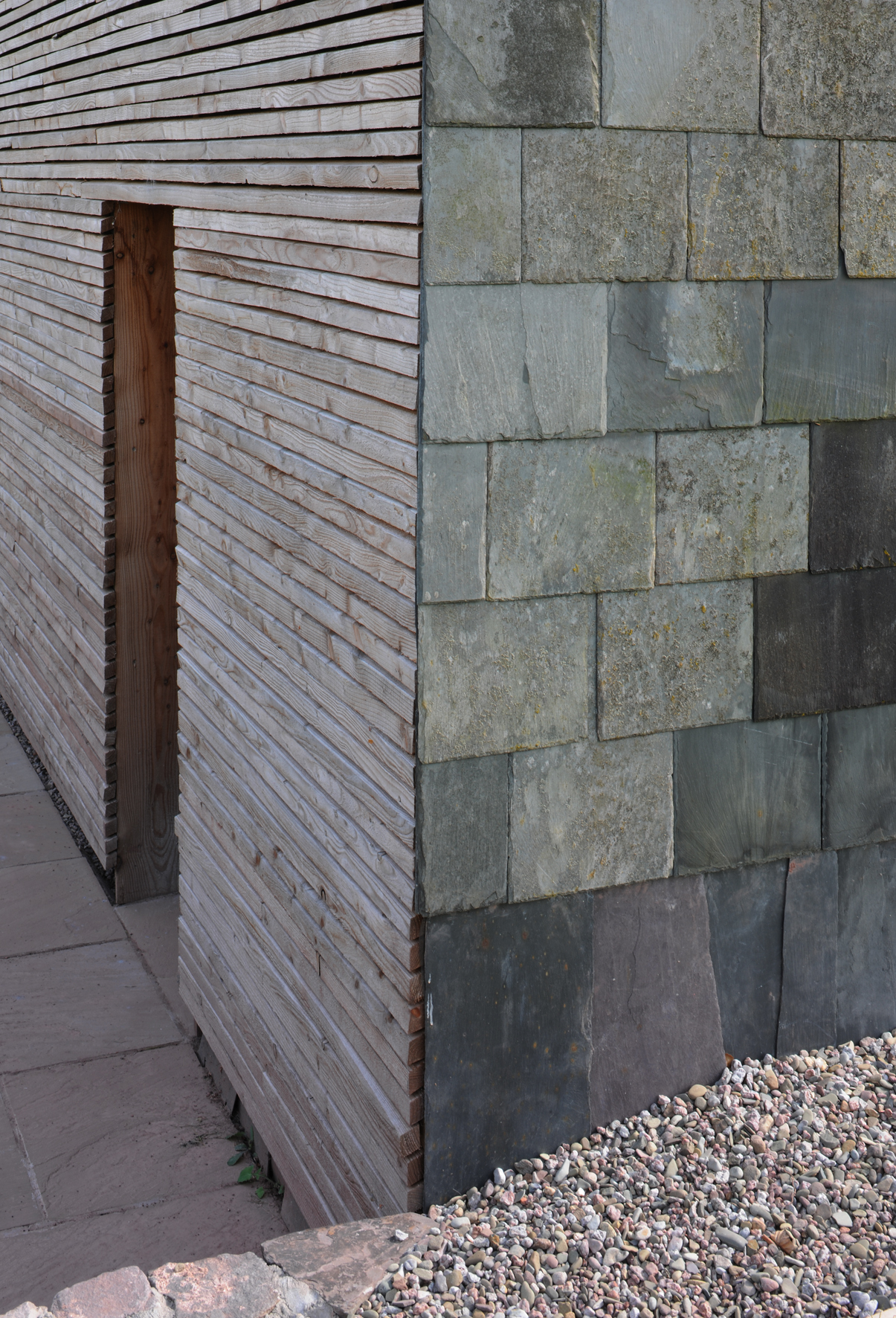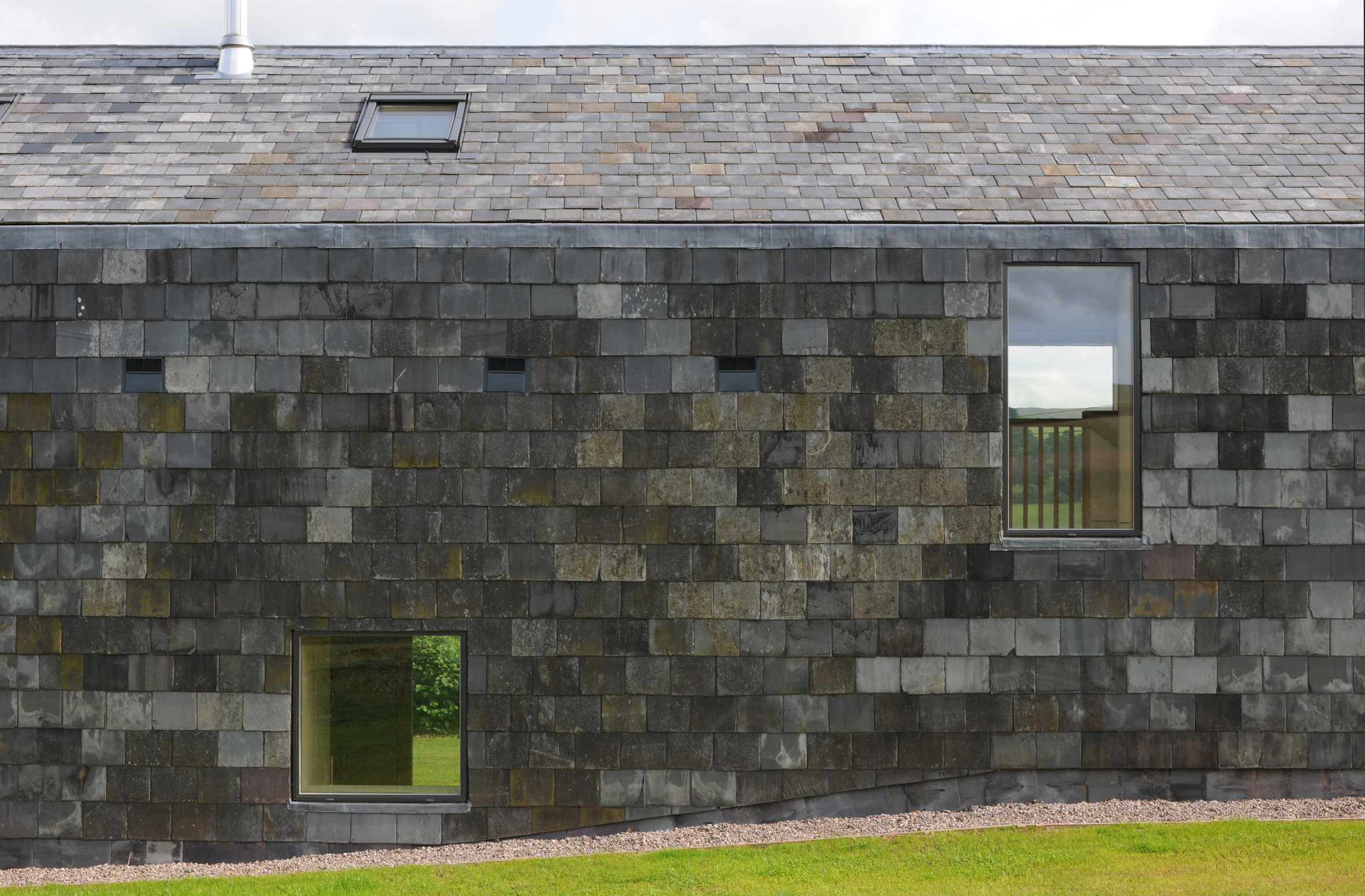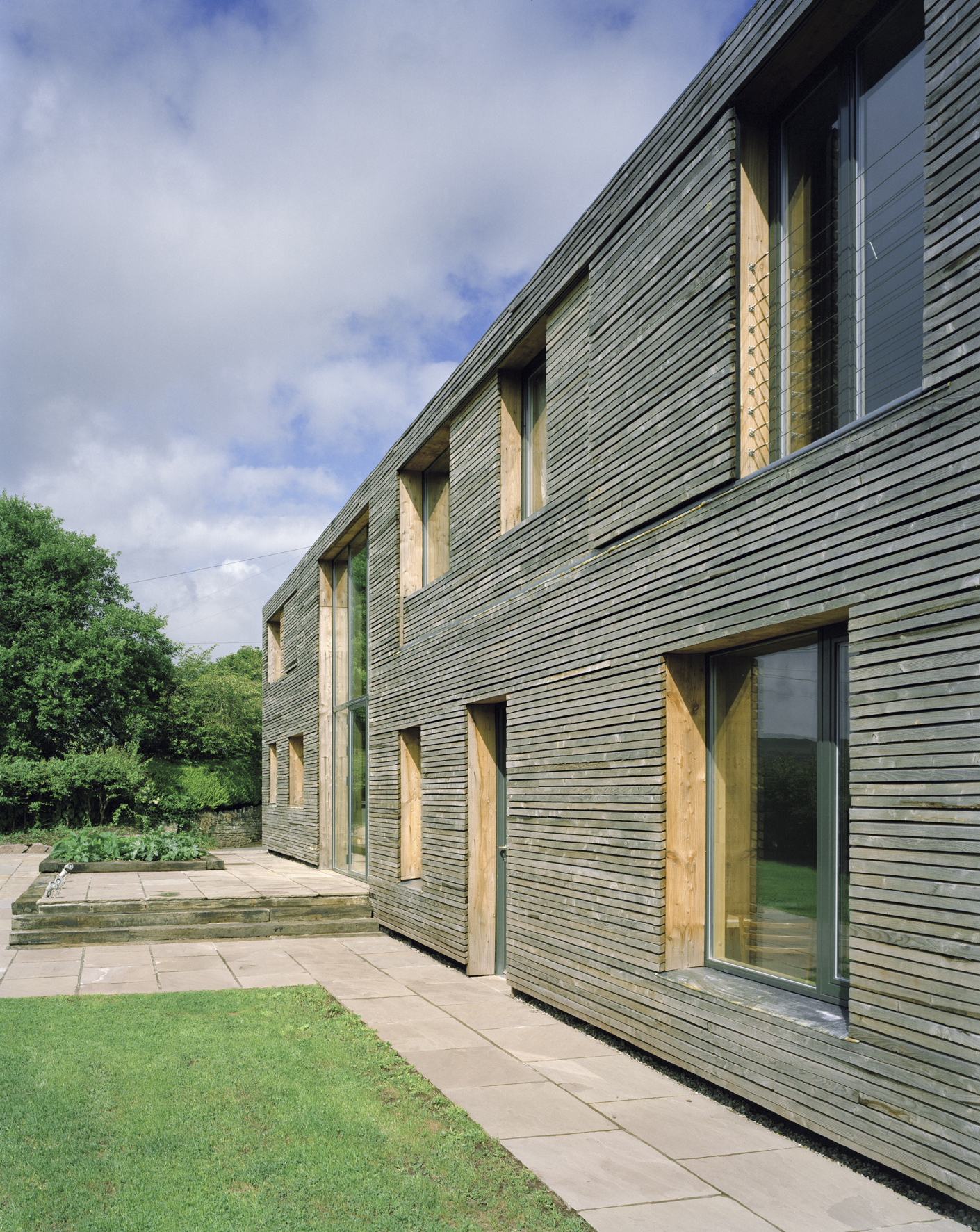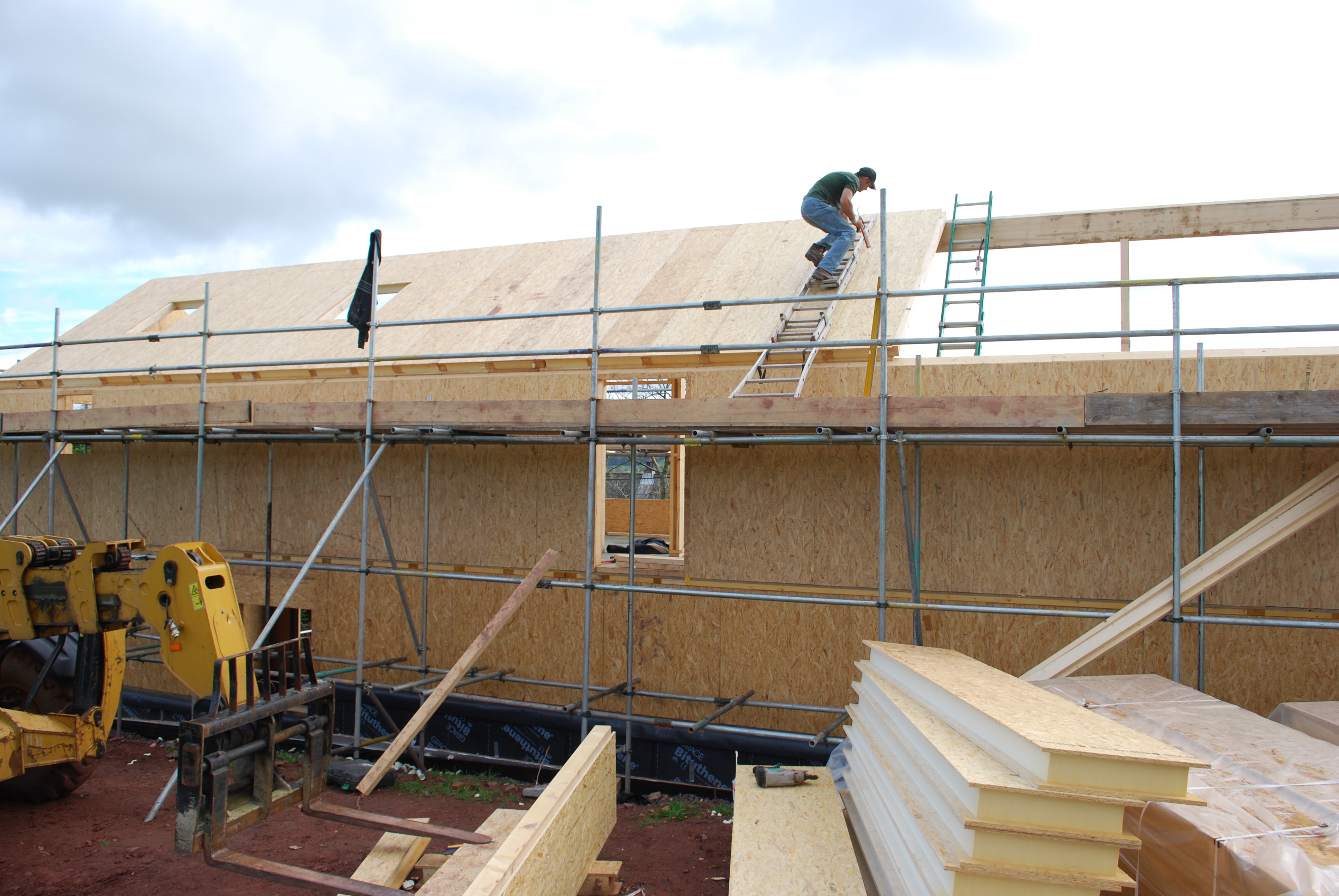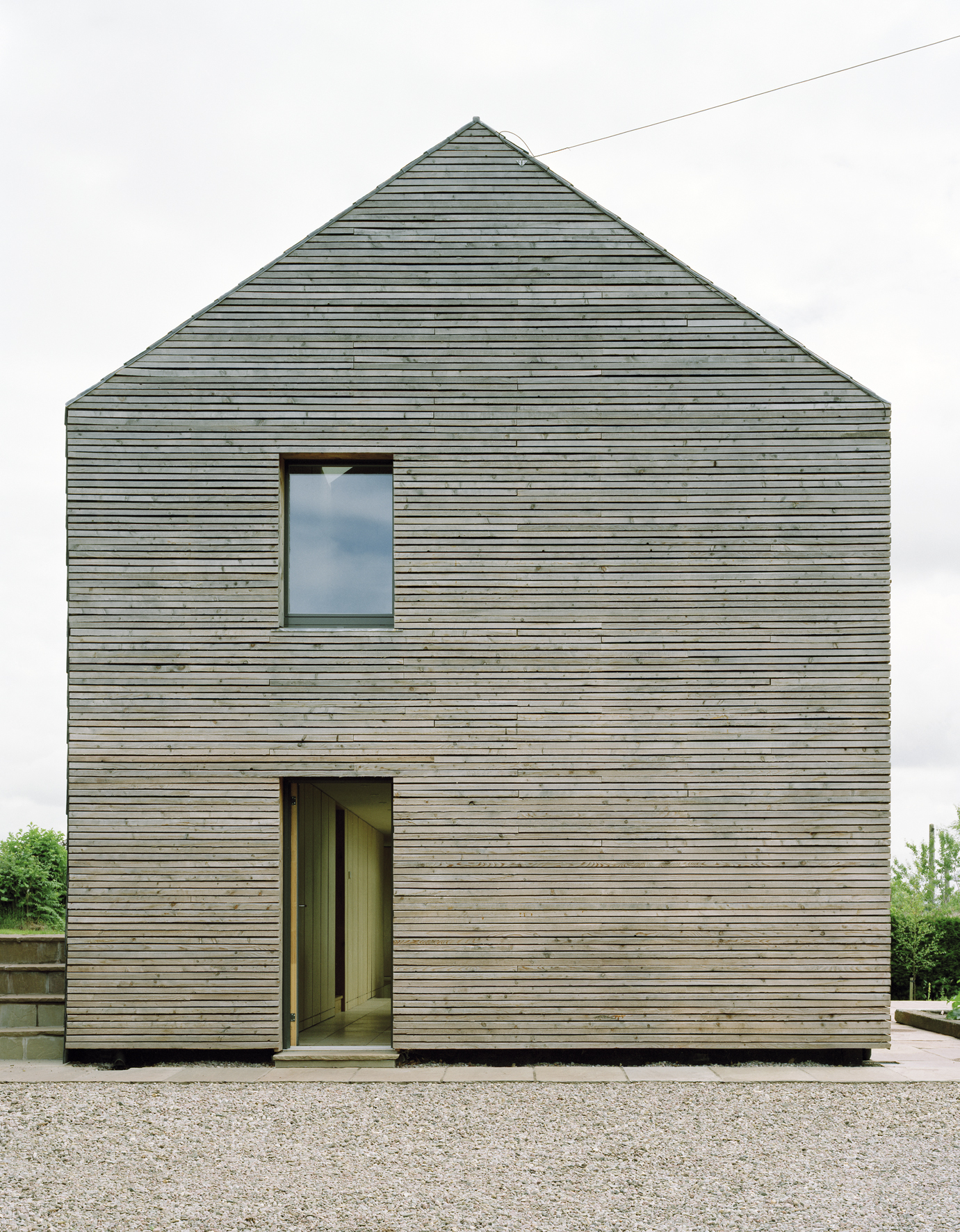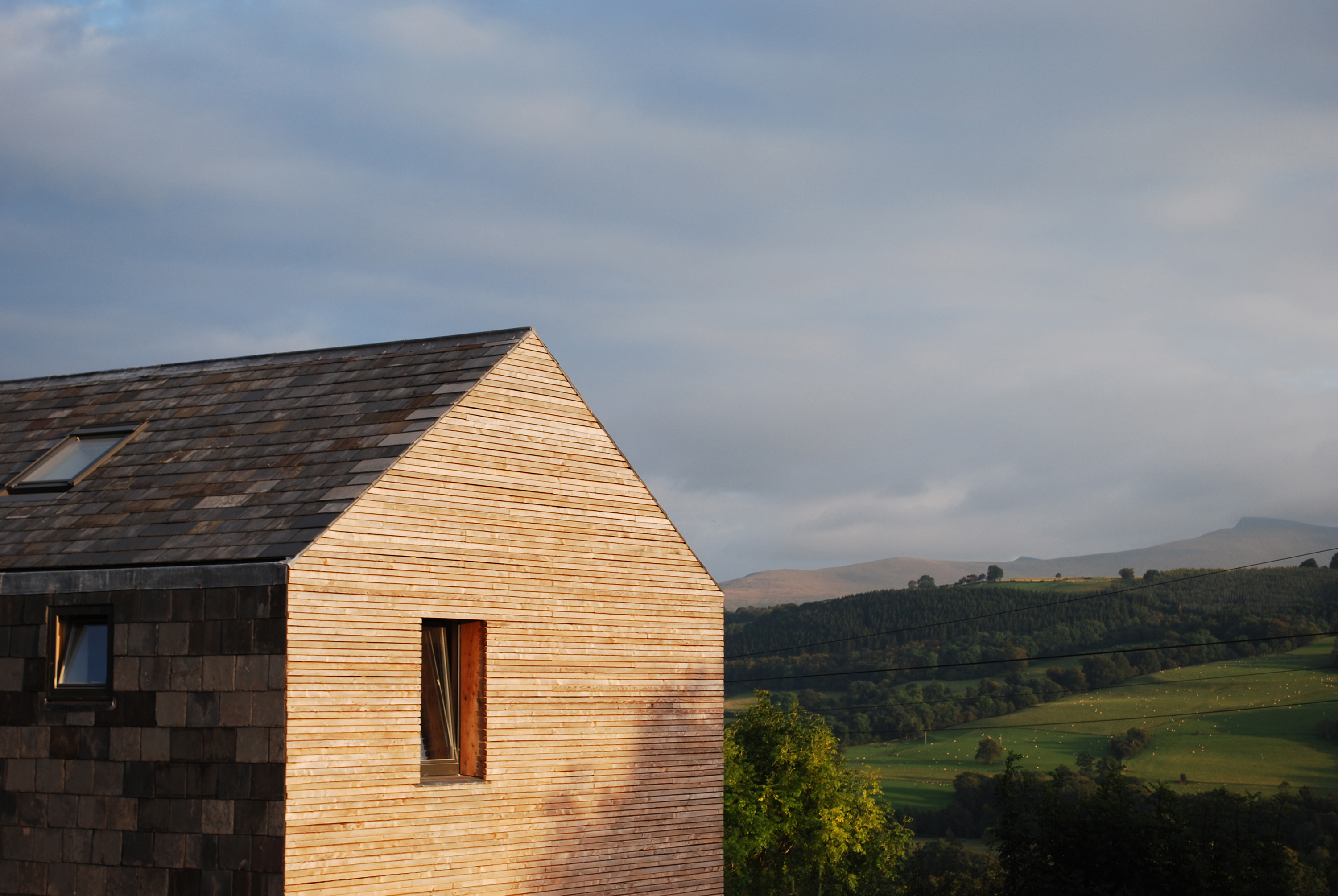Ty Pren - Powys
Situated in the midst of the Brecon Beacons, within the village of Trallong, the clients for Ty Pren (House of Wood) set out a brief in 2005 which required the architects to create a uniquely environmental building drawing strongly from the Welsh architectural vernacular. The site, located on the edge of the Brecon Beacons national park which looks on to Pen Y Fan to the south, the highest peak in South Wales, inspired the concept of a modern 'long house', following the contours of the land, embedding itself in the slope of the hill and responding to the prevailing conditions. The typology of the house lent itself to a passive solar plan, enhanced by the topography and aspect of the site. The client, acting as a construction manager, had a holistic environmental approach that facilitated the efficient delivery of a sustainable building within a tight budget whilst ensuring both the design and its delivery remained under constant scrutiny. A precedent of mutual trust and good will underpinned by a shared commitment to sustainability and green design has enabled the delivery of an exceptional building, small in scale but with huge ambitions.- Planning and Design
-
Planning and Design Process
Design development
Two years or research and design development was undertaken by the architects researching and developing the design through site visits, models and prototypes. This period was also used to procure local materials and to develop and adapt a Welsh vernacular.
Welsh culture
The architects felt that the real strength of Welsh culture was found in simple plain chapels and vernacular buildings embedded in the countryside, gradually added to and elaborated. They were keen to take reference from these, whilst avoiding simply reproducing an explicit version of the historic vernacular, an approach that would devalue the original. The intention was to reinterpret through familiar forms and ideas coupled with a holistic approach to environmental sustainability.
Landscape context
The site itself inspired the ‘long house’ design, and using contemporary construction techniques a thoroughly modern and high performance building, which responds directly to the landscape was delivered. The design was environmentally driven throughout and the passive solar design strategy uses every natural energy source available, supplementing the active features, such as the log boiler.
Sustainability Outcomes
Solar gain
An analysis of seasonal sun paths determined the building’s location in order to maximise solar gain, whilst also providing a south-facing garden to grow produce and maximise views over the valley. The compact design forms a sealed box that opens to the south and enables natural light and optimal cross and stack ventilation throughout. The south facing elevation and fenestration use optimal proportions of glazing (approximately 30% of the south elevation is glazed compared with just 5% of the northern), whilst alongside this deep window reveals and sliding shutters prevent excessive solar gain in the summer. These measures are designed to maximise solar gain in the winter and minimise overheating in the summer. The building only requires active heating throughout two months of the year and sustains internal temperatures though passive solar heating the in the shoulder seasons.
Green technologies
Collaborating with Green Earth Energy Ltd from the outset nearly 10% of the overall budget was invested in green technologies; the active heating strategy combines hot water from the 8KW log boiler and the solar collectors in a 500 litre accumulator tank, whilst the collectors also supply all domestic hot water needs and supplement the under floor heating system. A Mechanical Ventilation Heat Recovery (MVRH) system efficiently ventilates during the winter months and a Klargestor Biodisk operates as a sealed ‘water waste processing plant’ in the garden.
Materials
Many of the materials were sourced locally; from the larch cladding, sourced and felled from the client’s estate two miles away and subsequently milled on site, to the Welsh slate, recycled from derelict buildings on the estate, which wrap the roof and exposed north wall, and internally locally sourced oak was used on the fit out. The house also uses Structural Insulated Panels (SIPs) coupled with high performance windows and secondary insulation from a sheep’s wool blend.
Energy rating
Ty Pren achieved a SAP rating of 79 and Dwelling CO2 emissions rate 5.5 kgCO2/m2/year – six times more efficient than the government’s target emissions rate for a home of this size. Overall this 175m2 house produces 968.9 kg of carbon annually and with a small amount of energy generation on site this home has the potential to be zero carbon.
Related links
Feilden Fowles - Design and Construction Information
-
Client: Gavin and Davina Hogg
Architect: Feilden Fowles. For further details on the design and delivery team, please contact the Architects.
Date of Completion: November 2009
Contract value: £290,000
Site Area: 900m2
Awards: Finalist Grand Designs Awards 2010 Best New Eco-Home


